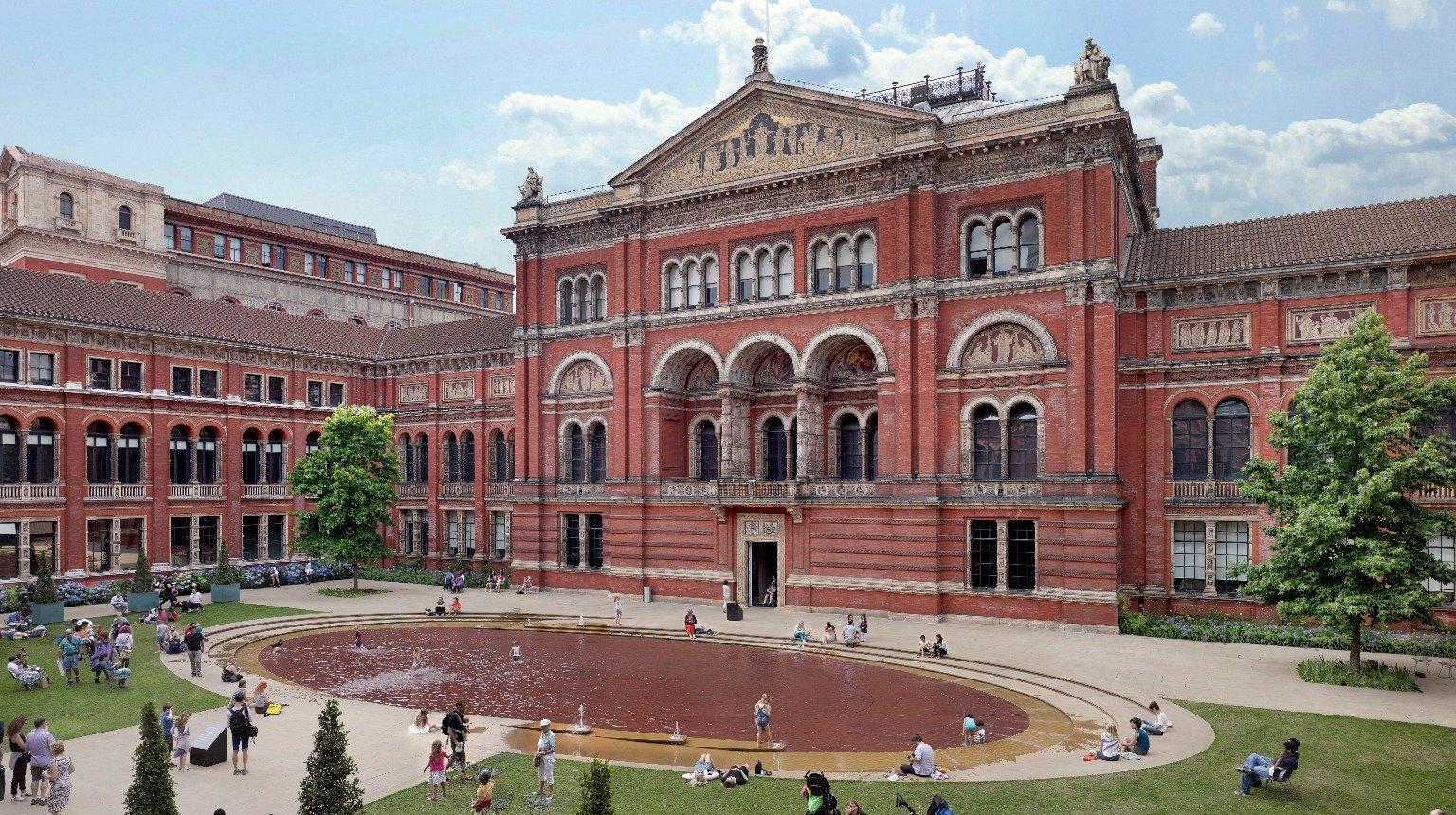1) Polygonzug 6/7/64 Nr. 2; 2) Rechteckschraffen 30/3/65 Nr. 1-4; 3-6) Quadrate Werden Rot
Frieder Nake, 1) 1964; 2) 1965; 3–6) 1966
In 1963, while studying at the Technical University in Stuttgart, Frieder Nake developed a computer program to control a Zuse Graphomat drawing machine. Nake used the machine to create some of the world’s first computer-generated drawings, which he exhibited alongside works by his colleague Georg Nees at the Wendelin Niedlich Gallery in 1965. Together with Michael Noll, who was exhibiting his own computer-generated images in New York during the mid-1960s, Nake and Nees were known as the ‘3n’ – the forefathers of digital art. Created between 1964 and 1966, the six works acquired by the Victoria and Albert Museum are among Nake’s earliest computer-generated works. Polygonzug shows an apparently random polygonal shape generated by Nake’s algorithms, while Rechteckschraffen is made up of four groups of rectangular hatchings in overlapping blocks – some monochrome, others in colour. The later group Quadrate Werden Rot (‘Squares Turning Red’) features four grids of green squares, overlaid with a growing number of red squares.
More information
Title of artwork, date
1) Polygonzug 6/7/64 Nr. 2; 2) Rechteckschraffen 30/3/65 Nr. 1-4; 3-6) Quadrate Werden Rot, 1) 1964; 2) 1965; 3–6) 1966
Date supported
2014
Medium and material
Ink on paper
Dimensions
1) 48 x 48 cm; 2) 47 x 47 cm; 3)-6) 44 x 44 cm (each)
Grant
6000
Total cost
12698

Get a National Art Pass and explore V&A South Kensington
You'll see more art and your membership will help museums across the UK
National Art Pass offers available at V&A South Kensington
Art Funded by you FAQs
Contact us
If you have a question about a work of art in our archive, please contact the Programmes team. We’ll be happy to answer your enquiry.